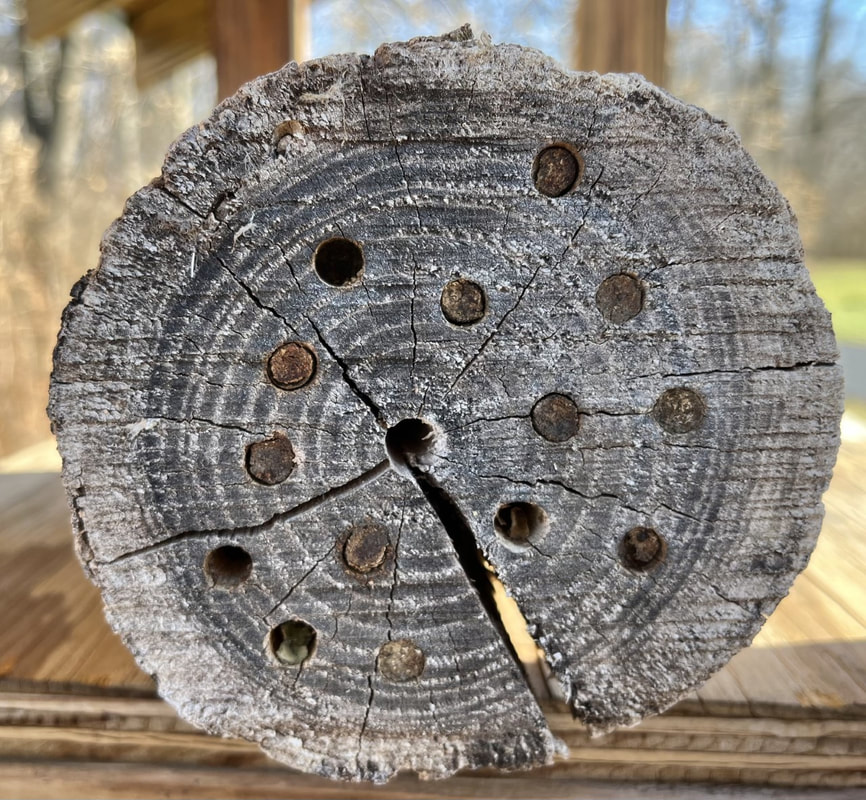70% of all native bees are solitary bees, and of these, 30% are cavity nesters. This diverse array ranges from the diminutive mason bee (Osmia spp) to our gentle giant, the carpenter bee (Xylocopa spp).
Female cavity nesting bees are hard-working, since they are solely responsible for finding, constructing and provisioning their own nests. Once a suitable cavity has been located, the female will begin the task of constructing nest cells and provisioning each with a ball of pollen and nectar. A total of 15 to 40 foraging trips may be required to gather enough food to provision one cell, resulting in potentially thousands of flower visits– making them pollination super-stars as a result!
An egg is laid on top of this food supply, and each nest cell is sealed with a ‘wall’ of mud or plant material, creating a private nursery for each egg. When the egg hatches, the larvae will find all the food it needs close at hand. After pupating through the cold months, warm spring temperatures will signal the time for the new bees to emerge.
In the wild, cavity nesting bees make their homes beneath rock or bark crevices, in the hollow stems of pithy twigs, or in tunnels formed by wood-boring insects. However, modern preferences for tidy, manicured landscapes often leave these natural nesting sites in short supply. You might choose to offer a ‘bee hotel’ with pre-drilled holes, such as the one pictured, which can be found in our Native Bee Conservation area. Better yet, consider a pile of logs or rock pile in a corner of your garden, and leave plant stems standing throughout the winter. Cavity nesting bees will thank you for providing a cozy winter home!


 RSS Feed
RSS Feed